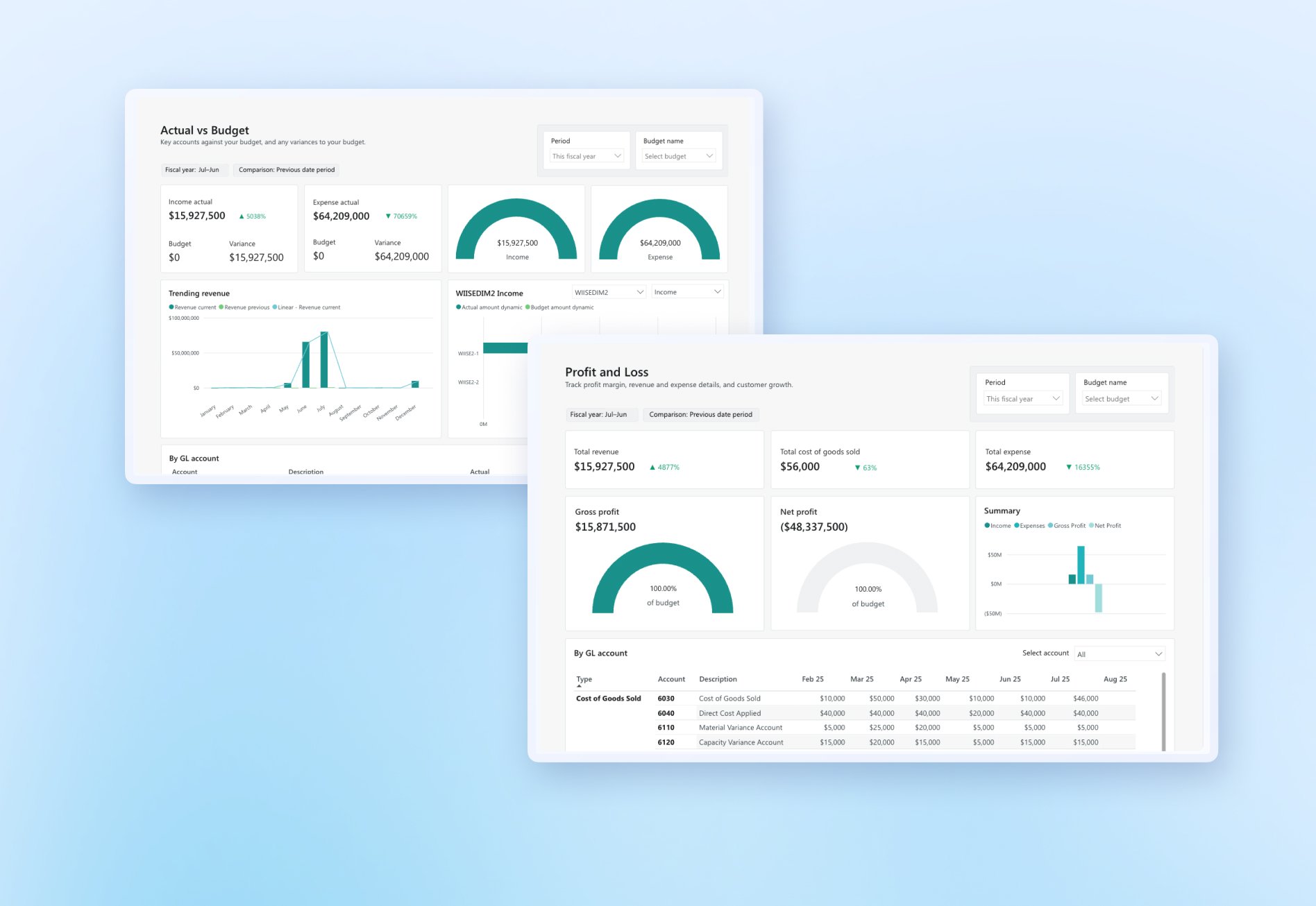Three years into starting a successful flooring distribution business, Terra Mater was hitting a ceiling. Having seen rapid growth, it was starting to lose deals.
On the surface, it seemed like a Terra Mater had a fulfilment problem, and in part, it did. But beneath the appearance of a fulfilment problem, was a data problem.
Customers would place last-minute orders, but staff had no way of knowing whether they had enough stock or if they could deliver it on time. Without the right information, staff couldn’t commit to a time, and customers went elsewhere.
Centralised data is a massive problem for most organisations, and it’s one of the biggest reasons why businesses fail to scale.
If you can’t accurately and efficiently communicate that data throughout your organisation, it leads to poor decisions, service or production delays, and increased costs.
Data management – or in simpler terms – how your organisation collects, stores, and surfaces information, is foundational to scaling, and we'll explain why.
Why using multiple software tools becomes a problem
Most businesses start with spreadsheets to manage their finances, inventory, sales, and customer service. As they grow, their operations become more complex, so to save time and improve management, they address each problem as it arises:
- If managing sales becomes difficult, they purchase CRM software.
- If managing their accounting becomes difficult, they purchase accounting software.
- If managing their inventory becomes difficult, they purchase inventory management software.
All these tools are a fantastic way to cost-effectively solve each problem individually. The problem is that as your business grows, cracks start to emerge:
- Delays in order fulfilment
- Over and under-buying of inventory
- Slow decision-making (because of reporting delays)
- Decreased profitability
- Increased headcount, just to perform admin
Most business owners will attempt to solve these problems by connecting their systems. This works in part, but connecting data isn’t the same as having a single source of truth.
What is a single source of truth?
As it sounds, a single source of truth (SSOT) is a single, definitive source of data that sits at the centre of an organisation.
Ideally, this SSOT should be hosted in a cloud-based platform that can be accessed by every part of the business (regardless of where staff are located) and updated in real-time. Even better, minimising or eliminating manual data entry ensures that any new or amended data is always accurate.

Why is a single source of truth important?
Data is the lifeblood of your business. Within any business, each department manages and adds data, and in many cases, this data is collected manually via paper-based processes or entered into systems that other departments may not use or have access to. This can work while your team is small and the same people work across functions, but as you grow, roles become more defined and the amount and quality of incoming data quickly becomes impossible to maintain.
1. Short-term data problems
Data sets that are duplicated, incorrect, or out-of-date, can cause significant problems across the entire business, such as:
- Inconsistent reporting – when different teams maintain separate data sets, knowing which version is most accurate becomes difficult. If the data going into your reporting can’t be trusted, neither can the reports being created.
- Poor decision-making – if your team can’t access data and create reports quickly, they can’t make decisions quickly – or be able to identify potential problems. Worse, if your data is inaccurate, your reporting will be too, leading to misinformation or leaders simply ignoring reports and reverting to ‘best guess’ decision-making.
- Poor customer service – fragmented or missing customer data can lead to all sorts of problems – from miscommunication to slow service or lost customer orders.
- Security breaches – data breaches are becoming more expensive, with the current average cost to businesses sitting at more than $4 million USD. Protecting multiple data sets, many of which might be sitting in spreadsheets on employee desktops and emails, isn’t possible and significantly increases the chances of a security breach.
- Compliance risks – any Australian organisation with an annual turnover of more than $3 million has responsibilities under the Privacy Act 1988. In addition, many industries now have traceability requirements, with manufacturers and distributors expected to provide auditors with proof of origin on certain raw materials or proof of adequate safety checks on certain products – none of which can be achieved without a centralised data set.
- Inefficiency – this is one of the most common problems we hear from customers with staff trying to manage and reconcile multiple data sets. Manual data entry is time-consuming – in some cases, businesses resort to hiring entire data entry teams. It’s also tedious, which often leads to errors (Fresh Frontier estimated 8 different points throughout its customer fulfilment process where errors could occur due to human error).
“If we made a tub of salad, there were eight areas where we could potentially make a mistake. We could get the order wrong, enter it wrong, send the wrong piece of paper – which meant if any discrepancies occurred, we had no idea why or even where to look”.
- Michael Leen, Managing Director at Fresh Frontier
2. Long-term data problems
The more your organisation grows without a SSOT, the greater your data problems become, and the more difficult it is to scale. Each short-term problem is magnified and adds cost to your operation through inefficient operations.
Without a single source of truth, your business is also incapable of automating anything cross-functionally, or using AI to retrieve information or action tasks without significant risk of error.
This can quickly put your company at a competitive disadvantage as competitors adopt new technology (with estimates that smart workflows and seamless interactions will be standard practice by 2025 according to McKinsey).
What can a SSOT do for my business?
When businesses successfully achieve a SSOT data practice, the results are often immediate – and dramatic. An SSOT provides your business with more accurate, trustworthy, accessible, and secure data – enabling it to take advantage of advanced analytics, automation, and faster processes. As a result, an SSOT can help your business to become more agile, efficient, and competitive.
Here are just some of the advantages an SSOT can bring to your business:
|
An accurate view of performance |
Increased productivity and efficiency |
Better customer service |
Happier staff |
Confidence in compliance |
|
See exact margins, down to the nearest cent |
No more working weekends |
Meet traceability requirements |
1. An accurate view of performance
With rising costs, knowing exactly how much money you’re making (or losing) on your products or services is more important than ever – but when data is stored in multiple systems or paper-based documents, it can be worryingly difficult to answer.
An SSOT enables your business system to instantly access vast amounts of precise data in real time to produce advanced business reporting and predictive analytics. With the ability to see exactly how your business is performing, as well as spot any future trends by accurately forecasting costs, production, profitability, etc, an SSOT gives you greater control over your business.
Pro Seafood's story
Pro Seafoods has multiple costs throughout its product lifecycle – including transport, cold storage, and packaging – as a result, its margins are often extremely tight, often just a few dollars or less per kilo of fish sold. Before centralising its data into Wiise ERP, Pro Seafoods’ operations team couldn’t see exact costs – despite growing its customer base by 400%, the business couldn’t easily see whether it was making money on each transaction.
With Wiise, the business has more control over its profitability. As Amy Turner, COO of Pro Seafoods, explains, “Because we now have a true understanding of costs, we can set our prices more appropriately. If we need to, we can get rid of a line that isn't moving and it costs us a fortune in storage. It's given us a better understanding of our business.”
2. Increased productivity and efficiency
The time and effort staff spend searching, correcting, and entering data into your business systems can very quickly add up. When a business is small, data processing might only take a few hours – but as it grows (sometimes rapidly), time, effort and costs begin to snowball, taking days or weeks to complete.
SCESGO MAX's story
SCESGO MAX, a leader in vehicle safety and monitoring solutions, had a small team of just 18 people, but quickly realised that it couldn’t access the data to plan production capacity and simple tasks, such as processing payroll, were taking up increasing amounts of time. When SGESCO-MAX’s managing director, Scott Macpherson, switched to Wiise, he noticed immediate time-savings, calculating that he himself had saved up to 3 days a week in time spent chasing down data needed to create basic reports. Overall, the business saved an impressive 2,500 hours a year in faster business processes and better capacity planning.
3. Better customer service
Your staff might tolerate spending time looking for the right data – but your customers won’t be prepared to wait (because why should they?).
A recent study revealed 64% of customers believe speed is as important as price – and 52% have hired a service provider or made a purchase based on the fastest response time (even when that provider wasn’t the least expensive).
Terra Mater's story
Terra Mater learned that 60% of its customer orders required a 24-hour turnaround – but its inability to access and report on accurate inventory data meant it could only manage 72-hours, at best. Its lack of speed was, quite literally, losing sales.
By centralising its data into Wiise ERP and integrating with its other Microsoft business tools, such as Dynamics CRM and Power BI, Terra Mater created an SSOT meaning orders could be processed in minutes and with full confidence that they had the available inventory to fulfil customer demand. Sales increased by 82%, average turnaround times reduced to 24 hours and the company’s customer feedback survey revealed that customers were delighted with the speed of service.
4. Happier staff and increased retention
Don’t underestimate the impact that slow systems and fragmented, messy data sets can have on your staff. Wages are often the largest expense, so giving employees the tools they need to do their jobs can improve their productivity as well as their job satisfaction. One survey uncovered some of employees’ top technology complaints as slow speeds (51%) and lack of automation (25%).
By providing employees with modern technology and automating tasks, you can allow them to spend time doing more interesting, meaningful, and impactful work, which in turn increases productivity and retention rates.
NAATI's story
“With the reduction in processing work, we were able to upskill our staff. As a not-for-profit organisation we need to use all our levers to retain good quality staff and providing them good training opportunities and career progression is one of the ways we can do it. We can upskill the staff now because they’re not spending as much time on processing. NAATI’s average employee tenure is six years, which is double that of the industry average of three years as per the Australian Human Resource Institute. Our average employee turnover ratio is 6%, which is half the industry average of 12%. It has helped us increase the job satisfaction of our employees and retain good quality staff.” - Ashwini Shankar, CFO, NAATI
5. Confidence in compliance
In many cases, an SSOT can help businesses meet regulatory compliance obligations – particularly when it comes to care providers such as those working under the NDIS, or manufacturing and distribution, which can have strict rules around traceability. Quality control, product recalls, and ensuring ethical sourcing of raw materials are just some of the reasons that a business might need to be able to provide auditors with information showing the end-to-end lifecycle of a particular product. Having accurate, real-time access to material, product, or service records significantly reduces the risk of being in breach of regulations, and administrative burden.
Terra Mater's story
For Terra Mater, a timber flooring specialist, being unable to quickly verify the species, origin, and legality was a serious compliance risk, with the Australian government increasing regulations around illegal logging traceability and timber identification testing. By centralising its data into Wiise, the business can easily see supplier information for all of its timber products, helping to trace products throughout its supply chain.
How to achieve a single source of truth
Getting to an SSOT requires an investment, but also depends on where your business is in its digital readiness. The first step is often identifying your business problem and making the business case for selecting an advanced business solution – like an ERP – that can centralise, connect and analyse your data quickly. (Check out our blog post, Is my business ready for an ERP? to help decide if you’re ready to upgrade your business software).
Once you’ve made the decision to move to an ERP and chosen a platform and ERP implementation partner, you can start preparing your data sets. Data preparation – also known as data transformation or Extract, Load, Transform (ELT) – is the most important (and often most time-intensive) step toward achieving an SSOT. 
1. Preparing your data
Cleaning, mapping, planning, and testing your data sets before launch is critical – even the most powerful ERP can’t compensate for inaccurate, incomplete, inconsistent company data (as we’ve already discussed).
To ensure your data is accurate and ready to use, your data will need to be converted into a file format that's compatible with your new ERP, such as Excel, XML, or database file. If you have multiple business systems, you will need to pull data from all of these different sources so that it can be combined into a single data repository.
Preparing data for a new ERP is an important task and, while your implementation partner may be willing to assist with extracting data sets, the cleaning and preparing of data sets is usually your responsibility. Many organisations choose to hire a data analyst or data engineer to ensure that the data migrations are as smooth and successful as possible.
For a full guide to preparing your data ahead of an ERP migration, read How to Prepare for Your ERP Data Migration.
2. Next steps
If your revenue, headcount or office space is growing quickly, your data sets will be growing even faster. The sooner you can create a centralised, single-source data repository, the easier it will be to manage and scale your business in the future.
To find out more about how to achieve a single source of truth within your business, talk to one of our friendly Wiise team members today.
Alternatively, you can read more about the benefits of centralising your business data here:
Ready to learn more?
Book a demo call with one of our friendly team members.



